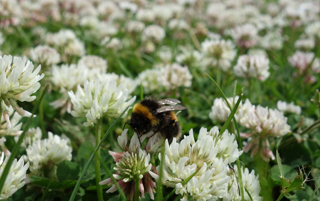 I don’t have much to report on my beekeeping activities this month as things have been very quiet. I have been extracting honey, of course, and the bees have been bringing in still more nectar and pollen from the ivy, which is still flowering though to a much lesser extent. So basically, I have left them to it, knowing that they are provisioning themselves well for the winter ahead. The bees have been on this planet for millions of years and survived quite well before man came along and started to ruin things by being greedy or by trying to improve on Nature. Whenever it is possible, therefore, I try to avoid what is called Autumn feeding when beekeepers top up the hive’s stores with sugar syrup.
I don’t have much to report on my beekeeping activities this month as things have been very quiet. I have been extracting honey, of course, and the bees have been bringing in still more nectar and pollen from the ivy, which is still flowering though to a much lesser extent. So basically, I have left them to it, knowing that they are provisioning themselves well for the winter ahead. The bees have been on this planet for millions of years and survived quite well before man came along and started to ruin things by being greedy or by trying to improve on Nature. Whenever it is possible, therefore, I try to avoid what is called Autumn feeding when beekeepers top up the hive’s stores with sugar syrup.
Though sugar syrup does contain the main requirement of the bees during the winter months, namely, carbohydrates, it does not contain any of the minerals, amino acids, lipids, etc which are contained in nectar, thereby depriving the bees, to an extent, of vital components of their diet. In an emergency, then alright, sugar syrup is better than nothing, but as a default winter food I prefer to let the bees decide for themselves what they need to survive and go with Darwin’s survival of the fittest strategy.
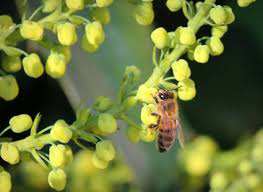 I spent so many of my early beekeeping years molly-coddling weak or deficient colonies to ensure their survival (or most often just delay their demise) and to what avail? The resulting colonies were invariably low in numbers (because of an unsatisfactory queen) or succumbed to disease because they did not have the foraging force to fetch the minerals and protein they required to survive. Nowadays, if a colony is not up to the mark, I will not waste time trying to save it, I just let nature take its course, better for the bees (strong, healthy colonies which survive) and better for me (releasing time to devote to the survivors).
I spent so many of my early beekeeping years molly-coddling weak or deficient colonies to ensure their survival (or most often just delay their demise) and to what avail? The resulting colonies were invariably low in numbers (because of an unsatisfactory queen) or succumbed to disease because they did not have the foraging force to fetch the minerals and protein they required to survive. Nowadays, if a colony is not up to the mark, I will not waste time trying to save it, I just let nature take its course, better for the bees (strong, healthy colonies which survive) and better for me (releasing time to devote to the survivors).
Admittedly, there are a lot of things stacked against the success and survival of the honeybees these days – habitat loss, climate change, insecticide spraying, to name but a few. If we can each do our bit to make up any one of these deficiencies (turning lights off in unoccupied rooms, not spraying our gardens with poisonous insecticide sprays, planting bee-friendly plants rather than the showy double-flowered varieties), then we would be doing the bees (and our planet) a very big favour indeed.
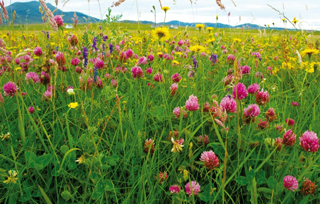 Which brings me to an initiative that has recently emerged where experiments are being undertaken to see whether wild flowers can be used to help control crop pests. The question being asked is “could cornflowers and poppies take the place of pesticides?” That is what researchers are proposing in a new study on wheat fields. By planting strips of wild flowers alongside the crops, the scientists found that they could encourage the presence of helpful bugs that eat pests.
Which brings me to an initiative that has recently emerged where experiments are being undertaken to see whether wild flowers can be used to help control crop pests. The question being asked is “could cornflowers and poppies take the place of pesticides?” That is what researchers are proposing in a new study on wheat fields. By planting strips of wild flowers alongside the crops, the scientists found that they could encourage the presence of helpful bugs that eat pests.
The study addresses what the authors call one of the biggest challenges to mankind- how to grow enough food for the world population without decimating the environment. Chemical pesticides are common tools for boosting a farm’s output, but they often harm biodiversity and some have very long persistence in the soil and waterways into which they leach.
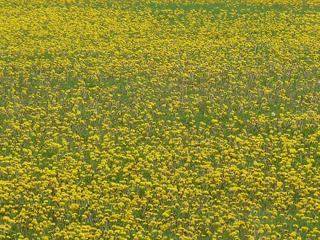 The authors investigated an alternative strategy for controlling the cereal leaf beetle, which can severely damage wheat crops. Along 15 winter wheat fields in Switzerland, the team planted rows of flowers that included dill, corn chamomile, garden chervil, cornflowers, coriander, and red poppies. These plants provide food and shelter for insects that eat cereal leaf beetles, such as ladybirds and lacewings.
The authors investigated an alternative strategy for controlling the cereal leaf beetle, which can severely damage wheat crops. Along 15 winter wheat fields in Switzerland, the team planted rows of flowers that included dill, corn chamomile, garden chervil, cornflowers, coriander, and red poppies. These plants provide food and shelter for insects that eat cereal leaf beetles, such as ladybirds and lacewings.
The researchers counted cereal leaf beetles in the fields, surveyed the wheat for beetle damage, and searched for the beetle’s enemies. The team also studied 15 other winter wheat fields where no flowers had been planted. The fields with flower strips had 40 percent fewer cereal leaf beetle larvae and 53 percent fewer adult beetles, the team reports in Proceedings of the Royal Society B. The amount of leaf damage was 61 percent lower in the flower-fringed fields. The number of adult predators of cereal leaf beetles in the flower strips was higher as well.
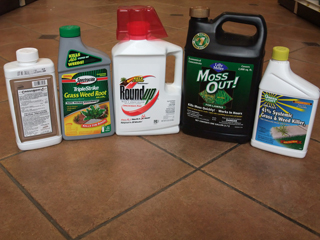 The key to the experiment’s success was choosing the mix of flowers carefully to help the pest’s enemies, the authors say. They estimate that wheat yield could rise by 2.5 to 10 percent as a result. If the farm’s output increases or insecticides can be avoided, the team writes, Flower strips can become economically self-sustaining or even profitable.
The key to the experiment’s success was choosing the mix of flowers carefully to help the pest’s enemies, the authors say. They estimate that wheat yield could rise by 2.5 to 10 percent as a result. If the farm’s output increases or insecticides can be avoided, the team writes, Flower strips can become economically self-sustaining or even profitable.
I wonder what it would take to persuade the UK to embark upon such a strategy? I know there is an initiative currently to encourage the planting of wild flower corridors alongside field crops (as part of the 10-year National Pollinator Strategy), but the cost of the seeds to enable this is prohibitive, especially to farmers who don’t have the resources for such schemes. Similarly with the railways, there is an incentive scheme to reclaim railway viaducts and rail-side verges by planting with wild flowers. But the cost of such schemes does not encourage their implementation.
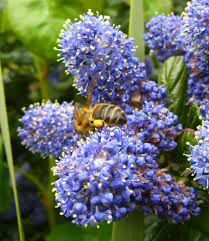 However, if we each bought a packet of wild flower seeds and sowed them in our gardens it would make a big difference to the available forage for the bees. I have used a green manure called phacelia to great effect. Sown and allowed to flower, the bees smother it for the copious amounts of nectar it produces. I don’t dig it in until it has gone to seed and these form the basis of the crop for next year. Another tack, if there is room, might be to plant shrubs such as ceanothus, cotoneaster, mahonia and the like – mine are alive with bees when they are in flower, and plants like mahonia provide forage at a time when there is little else available.
However, if we each bought a packet of wild flower seeds and sowed them in our gardens it would make a big difference to the available forage for the bees. I have used a green manure called phacelia to great effect. Sown and allowed to flower, the bees smother it for the copious amounts of nectar it produces. I don’t dig it in until it has gone to seed and these form the basis of the crop for next year. Another tack, if there is room, might be to plant shrubs such as ceanothus, cotoneaster, mahonia and the like – mine are alive with bees when they are in flower, and plants like mahonia provide forage at a time when there is little else available.
We need our bees and, at the present time, our bees need us. Let’s see if there is just one small action we can each take to guarantee their continuance (I am currently teaching 26 students who wish to become beekeepers. I count this as one of my small actions to help the bees. I hope it helps).
Colin Rees – 01872 501313 – colinbeeman@aol.com

